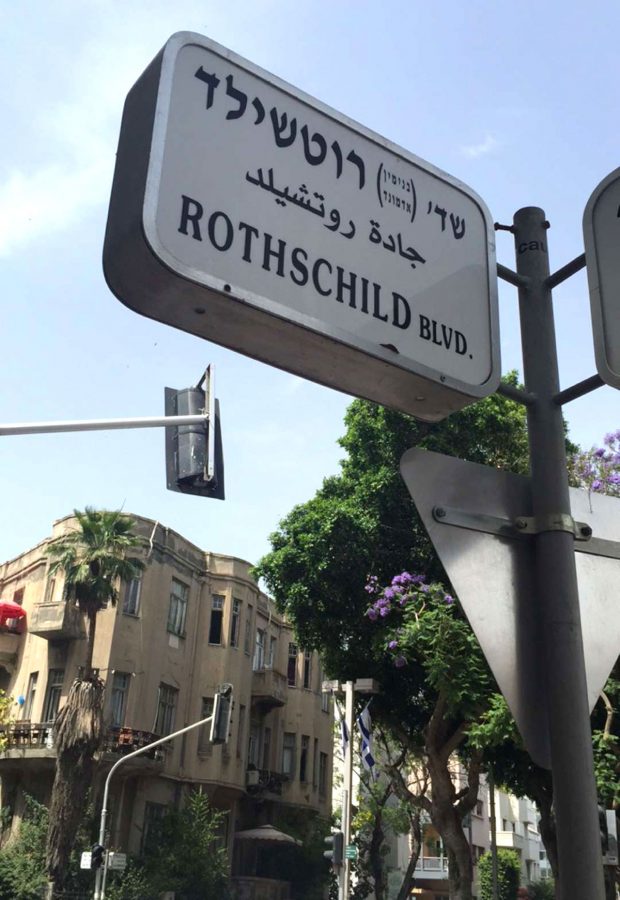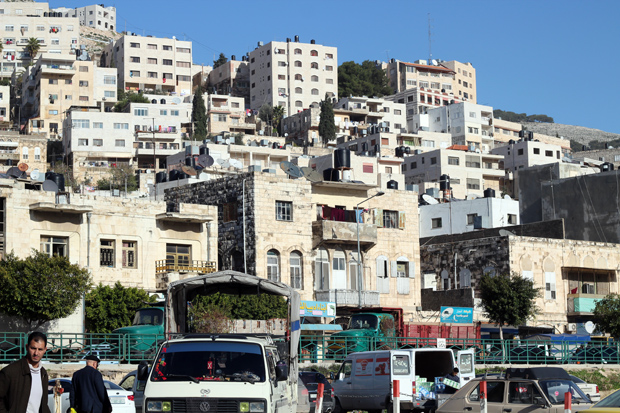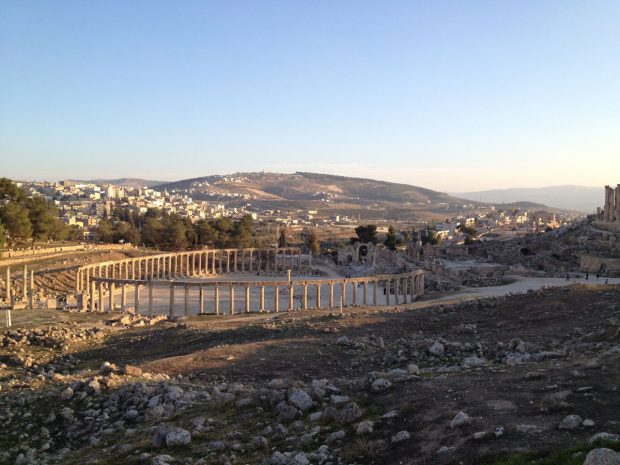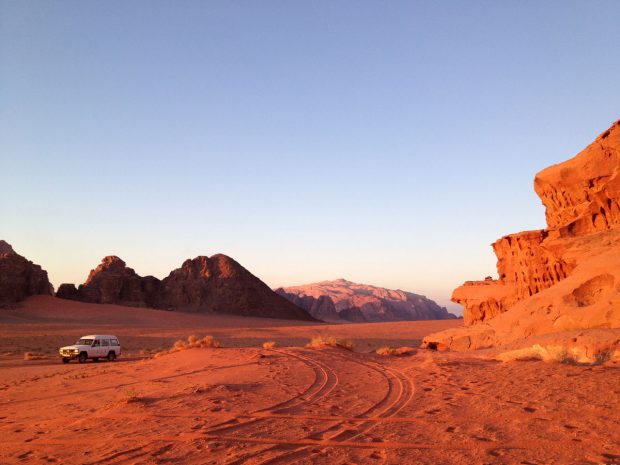One of my favorite parts of the world is also one of the most complicated. The tiny stretch of land on the western edge of the Mediterranean Sea, stretching down to the Red Sea and across the Jordan Valley, this little part of the Middle East is all at once both fascinating and beautiful.
And also quite contentious and confusing.
There are a lot of things to know about Israel and the surrounding region, and one of the best ways is to simply travel there.
It’s a place of history and mystery. Without going into the issue of geo-politics, this part of the world has so many big and small wonders, it’s no surprise there are so many people wanting to claim a piece of it.
We’ve read about these places in our Bibles, Torahs and Qur’ans, but seeing them first-hand, experiencing the diversity of local cultures and meeting the people here—there’s really nowhere like it.
I first fell for the region in 2010 on a backpacking trip that took me through Egypt, Jordan, Israel and the West Bank of Palestine. And I’ve been returning annually ever since.
There’s always been more to explore. Here I list some of the favorite places I’ve actually visited.

24 Amazing Places to Visit in Israel, Jordan and Palestine
1. Rosh Hanikra
In northern Israel on the border with Lebanon, Rosh Hanikra is a strange and surreal spot along the Mediterranean coastline. The sea splashing against the white chalk cliffs have formed a series of grottos, or caves, and tunnels.
In earlier times when there was a train route from Cairo to Istanbul, the railroad ran alongside the caves here. It’s a picturesque spot and one of the unusual geologic sights in Israel.
More photos: The White Chalk Cliffs of Rosh Hanikra

2. Sea of Galilee
Also called Lake Tiberias, the Sea of Galilee is the second lowest lake on the planet second only to the Dead Sea, just 100 kilometers south. Its famous for its place in Christian history, most notably as the site referenced in the New Testament where Jesus walked on water
Today, the lakeside town of Tiberias and the small towns alongside the coast make for some nice sightseeing—from visiting ostrich farms and kibbutzim to other religious holy sites.

3. Fauzi Azar Inn
The Fauzi Azar Inn is a 200-year-old Arab mansion turned into a guesthouse in the heart of Nazareth. It’s consistently rated among the best guesthouses of the world and it’s unique history makes it a great place to discover parts of northern Israel and the area near Galilee.
Read more: A Different Kind of Free Walking Tours with the Fauzi Azar Inn in Nazareth

4. Acre (Akko)
Like every other city in the region, there’s always some sort of religious significance to a place. The northern coastal city of Acre is interesting for its historical Old City and the coastal walls that date from the time of the Crusaders.
Acre is also home to a number of holy sites important to the Bahá’í faith, and as such, some of its monuments are listed as UNESCO World Heritage Sites.

5. Caesarea
Located almost exactly midway between Tel Aviv and Haifa, this national park (Caesarea Maritima) is important for its archaeological ruins dating back to the Romans—all the way to Herod the Great. With an aqueduct, amphitheater and hippodrome, there’s plenty to see for a stopover during a road trip.
There’s also an inscription on one of the ruins mentioning Pontius Pilatus—the only recorded place in the world where an inscription with his name exists.

6. Old Jaffa
One of the oldest cities in the region, Jaffa is on the southern end of Tel Aviv and dates back as far as 4,000 years old. (Meanwhile, Tel Aviv dates back to the 19th century.) The ancient port city has a number of tourist sites and museums today, including many small independent galleries, shops and cafés.
There’s a flea market open from Sunday to Thursday where you can find any number of knick-knacks. The Old Jaffa port has its fair share of hipster, trendy hotspots as well as ancient history—an interesting dichotomy typical of the region.

7. Tel Aviv Promenade
In the past decade the Tel Aviv municipality has worked to regenerate the beach promenade running from Old Jaffa up north to Tel Aviv’s northern port.
Wide sidewalks, shady groves and bike paths make up the promenade, with plenty of amenities to keep beach-goers and tourists happy—including free book exchanges, outdoor exercise equipment, free sand toy exchanges and lockers. All that set amongst skateboarders, live music and comfortable chill-out spaces perfect for watching the sunset.
Read more: Tel Aviv Hipster City Guide

8. Rothschild Boulevard
One of the most iconic streets in Israel, Rothschild Boulevard has both pedestrian and bike lanes running through the center of the city. It’s one of Tel Aviv’s biggest tourist attractions, lined with Bauhaus architecture and home to Israel’s Independence Hall.
The tree-lined street is a popular hangout for locals, with a number of cafés and restaurants along the route, plus open spaces for children’s play parks.
Read more: Cool (and Cheap) Things To Do in Tel Aviv

9. Nablus
A city in the north of the West Bank, Nablus is one of the world’s oldest city. A market through the Old Town seems to stretch forever, full of shops selling spices and sweets among the typical market bric-a-brac. Knafeh, a sweet made of cheese and shredded wheat (with plenty of sugar), originated from Nablus, dating as far back to the 10th century.
The Palestinian city has a few other tourist attractions besides its sweets and its Old Town, mostly religious sites on the outskirts, but it’s largely a not-very-touristic city—making it a fascinating place to visit. The people here are friendly and sociable.
See more photos: Nablus Old City in Photos

10. Jerusalem Old City
There aren’t many new ways to describe Jerusalem’s Old City, considering it’s at the heart of the world’s three largest Abrahamic religions and offers something different for every tourist.
From the Church of the Holy Sepulchre to the Dome of the Rock and the Western Wall, there are enough sites and attractions here to keep tourists busy for weeks, months or even years.
But perhaps the most fascinating part of the Jerusalem Old City and its four quarters (Jewish, Christian, Muslim and Armenian) is the intensity of it all. The old city walls hold a million different secrets and lies and that pressure seems to exert itself through the dense and musty atmosphere through the crooked alleyways. It’s something you just have to feel for yourself.
Read more: Jerusalem Hipster City Guide

11. Church of the Nativity
One of Christianity’s most historic holy sites, the Church of the Nativity sits atop the cave where Jesus was supposed to have been born.
The basilica itself dates back to the fourth century and was also one of the first UNESCO World Heritage Sites in Palestine. During the Christmas holidays, the site becomes especially relevant with celebrations marking the Biblical occasion.

12. The Wall
Officially designated a Separation Barrier by the Israel government, the concrete wall runs through Palestine, surrounding cities and serving as a way to control checkpoints and the movement of people.
The wall looks different in different places, sometimes with visible gaps, sometimes as high as 25 feet tall. It’s visible along many roads in the West Bank and in many places, on the Palestinian side, is covered in graffiti by local and international activists.
No matter your stance on the political issues at hand, it’s an important modern sight to see—a way to see what’s happening in the region today.
See photos: 13 Photos of the Wall Surrounding Bethlehem

13. Dome of the Rock
Located on the Temple Mount in the Jerusalem Old City, the Dome of the Rock is probably the most recognized rooftop from Jerusalem. The gold dome marks the site of the rock, or the Foundation Stone, which is an important religious symbol to both Jews and Muslims.
The building itself is a real beauty, with inlaid mosaics and an octagon shape. Getting inside to the Temple Mount requires some planning as it’s only open to visitors at certain times, and with strict security.

14. Western Wall
Just below the Dome of the Rock and the Temple Mount, the Western Wall is one of Judaism’s most holy sites because of its proximity to the Temple Mount where Jews are allowed to visit, but not to pray. The Western Wall comes alive during Shabbat (Friday evenings), with singing and dancing accompanying the prayers.
An interesting thing to note that doesn’t always get mentioned: the Western Wall is segregated by gender. Men and women aren’t allowed to pray together, and only men have access to the small temple to the side of the Western Wall.
Watch: The Sights and Sounds of Jerusalem (Video)

15. Ramallah
Located just a few short miles north of Jerusalem, Ramallah is the current capital of the Palestinian Authority government. Perhaps the most important historical site in the city is tomb of Yasser Arafat, a Nobel Peace Prize winner and Palestinian leader.
But besides politics, Ramallah has everything a big city can expect to have: from fresh food markets, trendy cafés, nightclubs and even a brewery (Taybeh Brewery) open to visitors Monday through Saturday.
Read more: How to Travel to Ramallah from Jerusalem

16. Yad Vashem
Israel’s official memorial to victims of the Holocaust, Yad Vashem is an important research and documentation site, offering a comprehensive look at history. There are a few different parts to the campus, including an eternal flame, a children’s memorial and many artifacts.
Read more: Visiting Yad Vashem – What to See

17. Dead Sea
The lowest point on dry earth, at nearly 400 meters below sea level, the Dead Sea sits along the border between Israel, Jordan and Palestine’s West Bank. Because of the high salt content in the sea, it’s incredibly easy to float. What they don’t tell you is that the water also stings!
The mineral-rich, black mud that sits in many areas along the Dead Sea is used for a lot of cosmetic treatments and has led to a number of health and beauty spas to pop up alongside the Dead Sea’s coasts—both in Israel and in Jordan.

18. Mahktesh (Mitzpe Ramon)
Mitzpe Ramon is a unique town, sitting on the edge of a 40km crater, or makhtesh. The crater is an abnormal geological formation—unique to this part of the world, and even more specifically, this part of Israel. There are only a handful of makhteshim—a crater formed by steep walls surrounding a deep valley.
Read more: Hiking in Israel’s Negev Desert at Mitzpe Ramon

19. Masada
Masada has a lot of significance in Israel due to its history: in the second half of the first century AD, Masada was taken over by a group of zealots called the Sicarii (from Latin sicarius, “dagger-man”) rebelling against the Romans to try and drive them out of Judea using violence.
Six years after the Sicarii took over Masada, the 10th Roman legion set out to take Masada back and laid siege on the fortress.
In order to break into the stronghold, the Romans built a ramp (which can still be seen today), and breached the walls using a battering ram. The Sicarii, not wanting to become slaves or go to prison, preferred the option of dying and committed mass suicide.
Today, it’s a popular tourist site for this history, but also for the views out over the Dead Sea. It’s popular to visit for sunrise because of the strong desert heat later in the day.
Read more: Camping at Masada, Israel

20. Red Sea
Egypt, Jordan and Israel all meet at the northern tip of the Red Sea’s Gulf of Aqaba. Resort towns line the Sinai peninsula, the Israeli city of Eliat and the Jordanian city of Aqaba. Travelers who go through Egypt often opt for a Red Sea tour to explore the diverse underwater world and vibrant coral reefs. The warm waters and unique marine biology make it a popular beach destination for the region.

21. Jerash
In the north of Jordan, Jerash is an ancient Greco-Roman archeological site dating back to the second century. The ancient town has been excavated to reveal entire colonnaded streets, temples and a forum.

22. Mount Nebo
Famous for its mention in the Bible, Mount Nebo is where Moses would have first seen the Promised Land, offering a panorama of the region. It’s a popular viewpoint where you can see for miles, even as far as Jerusalem.
Read more: Where Moses saw the Holy Land: Viewpoint at Mount Nebo, Jordan

23. Petra, Jordan
One of the world’s most famous archaeological sites, Petra is located in the Jordan desert, a onetime capital city. The site is accessed by a narrow cannon which opens up to valleys and cliffs where temples, tombs and buildings were carved into the rosy sandstone.
The Treasury is famous for its depiction in the Indiana Jones movies, though it some of the site’s viewpoints and other temples which really amaze visitors—so much so, I’ve been twice!
Read more: Why I wanted to Visit Petra a Second Time

24. Wadi Rum
A desert valley cut into the sandstone, Wadi Rum has been inhabited since ancient times, and today by many Bedouins (nomadic tribes).
It’s a popular site for ecotourism or adventure activities—everything from horse-riding and trekking to camping and posing for selfies with camels. Honestly, though: it’s one of the most beautiful deserts I’ve been to.
More photos: Camping at Wadi Rum…Bedouin Style!

• • •
Want to visit the Middle East?

Learn more about Israel in my Israel Travel Guide.

Learn more about Palestine in my Palestine Travel Guide.

Learn more about Jordan in my Jordan Travel Guide.

I’ve would love to visit the “real” Middle East and being that the region can be slightly volatile, it’s brilliant to know that one is not alone, and has a bit of company!
Cheers Victoria – yes, I think it’s one of the most fascinating parts of the world and visiting on a group tour can be really helpful!
You’re right, this small piece of land is quite complicated, but it’s also amazing for tourists. There are so many things to visit!
I would love to travel and get paid for it
Been to some places that you have shared, and really want to visit Israel again. Love the place!
O wow these locations looks absolutely stunning and filled with a richness of culture that i would love to experience, great suggestions